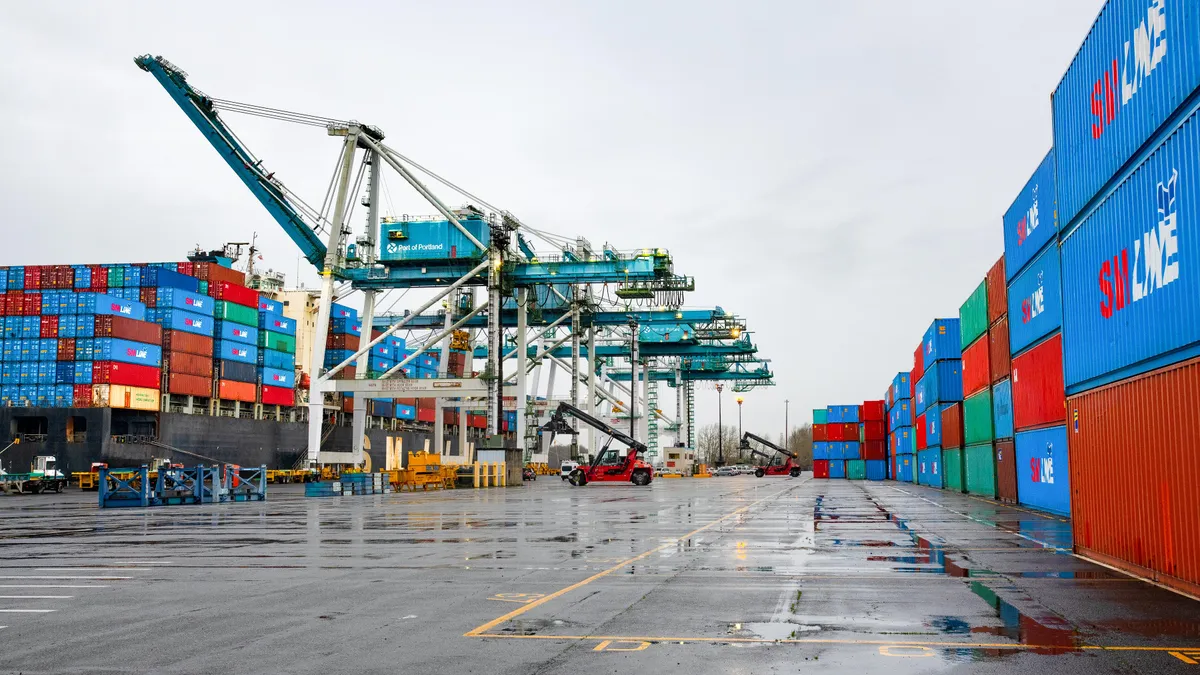The Port of Portland is working to keep its container terminal active months after announcing the port was discontinuing the service due to lack of funding.
While the seaport’s auto and breakbulk shipping operations would have continued regardless, the outlook for its lone container terminal changed in May when Governor Tina Kotek pledged to invest $40 million in state funds for the container service to continue. In exchange, the governor asked the port for a business plan to outline how it plans to maintain its container service at Terminal 6, often referred to as T6, and required the port to report progress on operation improvements and volume growth.
The Port of Portland delivered its proposed plan on Aug. 23, saying that in addition to serving regional businesses, the investment will bring in greater volumes and efficiency.
“Making sure container service remains available for Oregonians and businesses across the region – whether they're in the seafood, grain or animal feed industry, or sell building supplies, tires, shoes and toys – will require public and private support,” Port of Portland Executive Director Curtis Robinhold said in a statement.
Here are a few highlights from the port’s plan to keep its container service operational.
Increase volumes at the terminal
The port is committed to increase cargo volumes by 10%, according to the plan.
The port said it will double container volumes to 120,000 containers over the next five to seven years. These volume increases are required to reach financial sustainability, the port said. Current volumes processed at the port are roughly 60,000 containers annually.
The Port of Portland outlined four mechanisms available for it to grow its container business:
- Work with a private terminal operator to market T6 and secure more direct service
- Maximize T6's share of the local container market through shipper outreach and increased allocations on Portland-calling vessels
- Increase the volume of intermodal containers, primarily to and from the U.S. Midwest, moving through T6
- Provide T6 shippers with stable and ongoing container operations, establishing service reliability and confidence through an agreement with a private terminal operator
“Volume is the most critical factor affecting T6's financial performance. The Port recently communicated with its T6 ocean carriers that, in addition to the significant rate increases agreed to in 2023, T6 needed more containers to reduce operating losses,” the report outlined.
In response, several carriers have already agreed to increase allocations on their vessels at the Port of Portland to help increasing volumes at the container terminal, the port said.
Improve efficiency for vessel operations
The port’s goal is to improve efficiency by 2%, according to the business plan.
To achieve that, the Port of Portland, in collaboration with the International Longshore and Warehouse Union and Harbor Industrials Services, signed a memorandum of understanding committing to regularly discuss ways to improve terminal efficiency.
The business plan notes all three parties have recently been working to improve the efficiency of container operations, resulting in:
- Improved vessel productivity, resulting in crane productivity levels (moves per crane hour) exceeding prior T6 and current West Coast industry levels
- Increased focus on day-to-day hiring and optimization of equipment use
- The move from a 5-day to a 4-day gate in response to decreased volumes
- Increased yard densification to improve reach stacker proximity to the container stacks
- The implementation of scheduling initiatives to reduce costs
At the moment, the Port of Portland is working as the terminal operator for Terminal 6 but is seeking a third-party operator. Previously, the terminal was managed under former operator International Container Terminal Services, commonly known as ICTSI. The port took over in 2018 and has been actively working to build up container services.
“The Port and industry leaders are working hard on solutions, and the state will need to be a strong partner if we want container service to remain for the Oregon businesses and workers who depend on it,” Angela Wilhelms, president and CEO of Oregon Business & Industry said in a statement.













